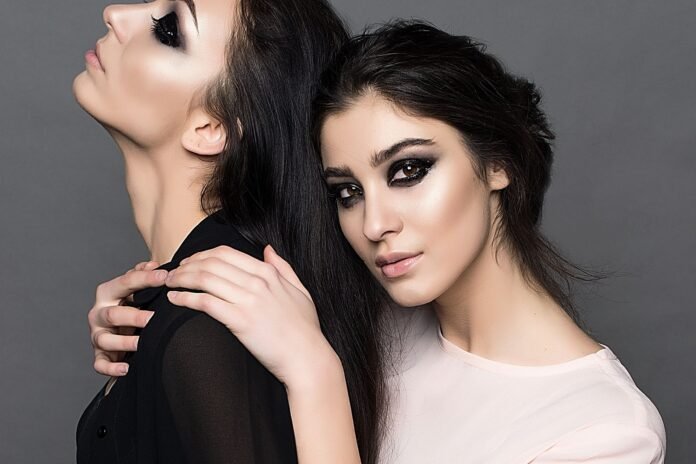From conscientious sources of sustainable materials to conscious production processes, the world of sustainable fashion is rapidly expanding. At the forefront of this movement is a new breed of leaders: sustainable fashion pioneers. By approaching fashion production with an eye to sustainability, these brands are boldly reinventing the runways with fashion that is fashionable, ethical, and eco-friendly.
1. Lead the Charge: Sustainable Fashion Pioneers
Fashion and sustainability need not be a mismatch. For centuries, fashion has been seen as a necessary part of life, yet the associated environmental effects have only come to light in more recent times. In response to this pressing issue, a group of innovators, thinkers and designers are putting sustainability first and embracing eco-friendly fashion in a bid to reduce our impact on the planet.
At the forefront of the sustainable fashion movement is a colourful bunch of pioneers. Ranging from major fashion houses lending their expertise and creativity, to individual bloggers stirring up the debate, sustainable fashion is slowly but surely making an impact.
- Ralph Lauren: Sports utility giant Ralph Lauren has been focusing on sustainability since 2013, when it released a range of garments and accessories featuring organic cotton, recycled wool and environmentally conscious dyes.
- Livia Firth: Eco-friendly brand consultant and activist Livia Firth has spent her whole career championing the cause of sustainable the fashion industry. Through her consultancy firm, Eco-Age, Firth has encouraged major fashion brands to go green.
- Stella McCartney: McCartney has been leading the way for eco-friendly fashion since the launch of her eponymous brand in 2001. McCartney’s emphasis on cruelty-free, sustainable materials has seen the brand reach remarkable success.
These pioneers are joined by a plethora of sustainable-minded bloggers, activists and fashion designers who are driving the conversation forward. Through creative projects, thought-provoking campaigns and global initiatives, the sustainable fashion movement continues to make tremendous strides.
At the same time, consumers have become more conscious of the fashion choices they make, embracing low-impact, animal-friendly and eco-friendly brands.
Thanks to their hard work and dedication, sustainable fashion pioneers have gradually shifted perceptions and transformed the industry entirely.
2. Eco-Friendly Design: Brands Driving Change
The rising temperatures. The landfills brimming with harmful plastics. The toxic and hazardous materials that are released to the atmosphere. The extensive use of energy resources for mass production. Times, filled with mixed emotions. But there is hope. People are now more invested in sustainable design measures and their adoption is no longer limited to seed companies. Here are some brands and initiatives driving this positive change.
Vivobarefoot- Barefoot Shoe Company
Vivobarefoot, a British barefoot shoe company was co-founded by Galahad Clark and Tim Brennan in 2004 and aims to provide natural movement in their shoes. Vivobarefoot is designed with barefoot ergonomics in mind – with a wide toebox and a near zero-drop sole. Materials used are vegan and contain recycled plastic. They are also produced in factories run without the use of water and completely chemical-free.
People Trees- Sustainable clothing brand
People Tree is a UK-based supply chain that focuses on sustainable clothing production and ethical commerce. They source their materials from textile cooperatives in India, Bangladesh, and Nepal and are also FairTrade certified. From their material to their production, the company is working to reduce its carbon footprint and to provide fair wages to its employees.
Patagonia- Outdoor retail giant
Patagonia, the iconic outdoor clothing company, is a leader in sustainability. The company has made numerous commitments from using 100% renewable energy for its operations to their popular ‘responsible down initiative’. The company also encourages repair, donates 1% of its sales to environmental organizations, and gives grants for social and environmental projects.
Zero-waste Design- A Design Revolution
Zero-waste design is a movement driven by a handful of designers who are challenging the traditional methods of product design by creating products without any waste. This can involve utilizing recycled and repurposing materials or by taking an innovative approach to design in order to avoid waste. Through this revolutionary design movement, alternatives are being created to mass-produced goods, providing sustainable solutions to everyday problems.
These initiatives are pushing the boundaries of green practices and encouraging companies to make eco-friendly changes. Whether it is in the form of making conscious consumer choices or introducing sustainable production methods, brands are driving change and revolutionizing the way products are made and consumed.
3. Innovative Textiles: The Green Revolution
- The future of textiles lies in sustainability. Eco-friendly, sustainable textiles have become increasingly popular as consumers look to minimize their environmental impact.
- While some sustainable fabrics, such as nylon, bamboo, and hemp, have been around for some time, new technologies are taking sustainability to a whole new level.
Innovative Textiles from Nature
From mushrooms to pineapples, nature offers an array of innovative materials for creating environmentally friendly fabrics. Mycelium, a type of fungus used in mushroom production, can be grown into three-dimensional shapes that are then used as fabric for apparel and furniture. Similarly, pineapple leaves can be converted into a thread and woven into a fabric known as piñatex.
Circular Economy
Circular economy is a concept that has taken off in the textile world in recent years, wherein fabrics are designed and produced with sustainability in mind. Textiles are created with recyclable materials and are made to be reused or biodegradable at the end of their life. Companies are now creating fabrics made from recycled plastics, such as PET or nylon, which can be used to make clothing and other fabrics.
Smart Textiles
Smart textiles are another development in the technology-driven green revolution. Smart textiles, such as solar-powered fabrics, can use natural light to generate enough energy to power small devices. Some smart textiles are even designed to be self-cleaning and can break down pollutants from water and air.
Pollution-Fighting Fabrics
Pollution-fighting fabrics are made with materials that absorb and transform pollutants in the air into useful products. These fabrics can capture particles such as carbon dioxide and nitrogen dioxide and convert them into helpful substances. This type of fabric can serve as a protective barrier for cities, and can reduce pollution levels in locations with poor air quality.
Conclusion
The green revolution is transforming the textile industry, making it more sustainable and eco-friendly. From innovative fabrics made from nature to fabrics designed with circular economy in mind, the textile industry is slowly making strides in building a better, sustainable future. As new technology continues to develop, the possibilities for eco-friendly fabrics are limitless.
4. Putting Responsibility First: Growing Sustainable Fashion
Sustainable fashion is good for the environment and great for your wardrobe. In many circles, it’s becoming more and more popular for people to prioritize eco-friendly and ethical materials when shopping for their clothes, and ultimately, putting responsibility first. Let’s take a look at some of the steps for growing sustainable fashion:
- Committing to quality. Invest in pieces that can be worn for years. By choosing to buy quality items that will last, you’ll be contributing to the sustainable fashion movement. Not to mention, having nicer and more unique pieces in the wardrobe – and for a more minimalist look, too.
- Repurposing items. Old clothes can be reused and reinvented in so many ways. With a bit of creativity, a thrifted old graphic t-shirt can become a dress. Shoes and jackets can be painted with acrylics to give them a new look. As well, worn clothing pieces can be cut up and turned into new items. There’s no lack of ideas!
- Opting for timeless pieces. Yes, there’s no problem with keeping up with trends. But it can be risky in terms of sustainability. Go for timeless items that you can wear for the long-term, rather than seasonal pieces that can be disposable.
- Supporting sustainable fashion brands. Do your research and find brands that are doing their part for the environment, and prioritize those. Not only are you helping a great cause, but you’re also supporting small businesses.
Making a conscious effort towards sustainable fashion is a great way of contributing in protecting our environment, while having the opportunity to dress in fashionable and ethical fashion. Commit to being part of this movement, take small steps when necessary, and above all – keep on educating yourself and others for a brighter future.
5. Shopping with a Conscience: The Future of Eco-Friendly Fashion
Sustainability isn’t a trend that’s going away anytime soon, and that’s a very good thing. Consumers are increasingly looking to support fashion brands that prioritize eco-friendly practices, from fair wages and responsible sourcing to upcycled materials and organic fabrics. Here’s a look at how the future of eco-friendly fashion is being shaped.
1. Consumers Taking Action
By 2050, it’s estimated that the fashion industry will be responsible for a quarter of global carbon emissions. This is largely due to the fast fashion industry’s impact on the environment. Consumers are now beginning to play a part in reducing the environmental footprint of fashion by making more sustainable buying decisions.
2. Pioneering New Fabrics
It’s not only shoppers that are taking steps towards sustainability. Many designers are now pushing boundaries and experimenting with pioneering, eco-friendly fabrics. From pineapple leather to rPET, brands are looking to innovate within this space and create fashion that’s better for the environment. Designers like Stella McCartney have even incorporated eco-friendly materials like mushrooms and algae into their collections.
3. The Ins And Outs of Upcycling
An increasingly popular wave of sustainable fashion is ‘upcycling’, where an item of clothing is restored. It involves reusing existing materials and can often actually improve on the items original form. A number of fashion and lifestyle brands are embracing the trend, from pre-loved and vintage brands like Beyond Retro to younger lifestyle brands like Depop.
4. Digital Influence
The world of digital influence has encouraged fashion brands to be more conscious. With social media now playing an increasingly integral role in branding, being active on platforms like Instagram is essential. Appealing to consumers with an interest in conscious fashion, brands are now creating more sustainable-focused campaigns.
As the fashion industry becomes more conscious of its environmental impact, eco-friendly fashion is becoming the norm rather than an afterthought. Consumers now have access to more options to maintain an environmentally friendly wardrobe.
- Increased awareness of the environmental footprint of fashion.
- Innovations in eco-friendly fabrics and materials.
- The rise of upcycling and pre-loved fashion.
- The influence of digital platforms on sustainability.
The world of fashion is ever-evolving and it’s heartening to see the sustainable fashion pioneers in the lead. This movement for eco-friendly practices is essential for the fashion industry and the planet. The pioneers are inspiring others to follow their lead in advocating for sustainable fashion. Now that the ball is rolling, it is up to the fashion industry to keep the momentum going.




